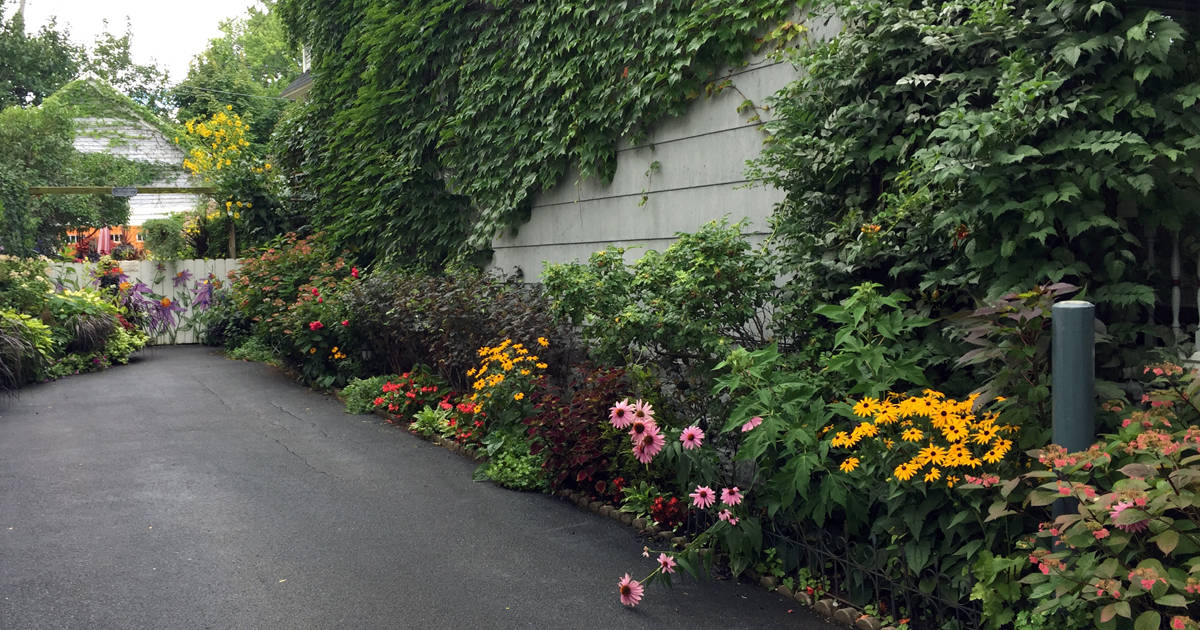An Unbiased View of Hilton Head Landscapes
Table of ContentsThe 10-Minute Rule for Hilton Head LandscapesHilton Head Landscapes Things To Know Before You Get ThisHilton Head Landscapes for BeginnersHilton Head Landscapes Fundamentals ExplainedHilton Head Landscapes Things To Know Before You BuyThe 5-Second Trick For Hilton Head LandscapesThe 15-Second Trick For Hilton Head Landscapes
Line produces all forms and patterns and can be made use of in a range of ways in the landscape. Line in the landscape is developed by the edge between two products, the overview or shape of a type, or a long direct feature. Lines are an effective device for the designer since they can be used to produce a limitless selection of forms and types, and they control activity of the eye and the body.

Lines in the landscape. The residential properties of lines identify just how individuals respond to the landscape, both mentally and literally.
The Best Strategy To Use For Hilton Head Landscapes
Curved lines create a casual, natural, unwinded character that is linked extra with nature and unbalanced equilibrium. Bent lines relocate the eye at a slower speed and include secret to the area by creating hidden views.
Vertical lines in the landscape include tall, narrow plant material, such as trees, or high structures, such as an arbor or a bird residence on a post. Straight lines move the eye along the ground plane and can make a space feel larger. Reduced lines are more suppressed and produce a feeling of rest or repose.
The Basic Principles Of Hilton Head Landscapes
Lines are also created by the vertical kinds of constructed features and plant product. There are three key line kinds that create form in the landscape: bedlines, hardscape lines, and plant lines.
Bedlines link plant product to the home and hardscape because the eye follows the line, moving the gaze via the landscape. Hardscape lines are developed by the edge of the hardscape, which marks the developed framework. Line can also be produced by long and slim products, such as a fencing or wall surface.
Fascination About Hilton Head Landscapes
Kind is located in both hardscape and plants, and it is usually the leading visual aspect that spatially arranges the landscape and typically figures out the style of the yard. The kind of frameworks, plant beds, and garden accessories also figures out the overall type style of the garden. Formal, geometric forms consist of circles, squares, and polygons.
Plants develop kind in the yard with their describes or silhouettes, yet type can also be specified by a gap or adverse room between plants - landscapers hilton head island (https://www.ted.com/profiles/47214730). Circles can be full circles, or they can be divided into half circles or circle sections and integrated with lines to produce arcs and tangents
The 2-Minute Rule for Hilton Head Landscapes
Circles are a solid style type due to the fact that the eye is constantly attracted to the center, which can be used to highlight a focal point or connect other forms. Round types in hardscape and grass panels.
The square kind can likewise be segmented and pre-owned continuously to develop a grid pattern. Unlike circles, squares are more powerful on the brink, which can be lined up or overlapped to create special patterns and more complex forms. Polygons are many-sided kinds with straight edges. Triangulars, for example, are three-sided polygons.
Twisting lines often imitate the all-natural training course of rivers or streams and can be referred to as smooth lines with deeply curved undulations. Meandering lines (Figure 3) work well for pathways, plant bedlines, and dry stream beds. Meandering lines can add passion and mystery to a garden by leading visitors around edges to discover new sights and areas.
The Basic Principles Of Hilton Head Landscapes

Common plant kinds are well developed and standard, as form is the most regular and identifiable feature of plants. Type can also be developed with the massing of plants, where the total mass develops a various type than a private plant.
A highly different form should be used with careone or 2 work well as a prime focus, but a lot of wreak havoc. All-natural plant types, instead of over-trimmed forms, should develop the bulk of the make-up. The significance of general form is essentially based on the watching perspectivethe kind of a tree can appear rather various to an individual standing under the cover versus seeing the tree from a distance in an open area.
Getting The Hilton Head Landscapes To Work
Plant kinds also produce and define deep space or open spaces between the plants, developing either convex or concave forms in deep spaces. High-arching tree branches commonly develop a concave open area under additional resources the branches, and a rounded cover with reduced branches loads the space to develop a convex kind in the open area under the tree.

Comments on “The Buzz on Hilton Head Landscapes”